The next flagship of the big boys in the mobile industry is something that every smartphone user looks forward to. That’s because people crave more for the things that mobile phones can offer, be it the features, aesthetics, enhanced speed of interactivity, and whatnot. Techno-geeks will never get enough of them—and all the more with the people whom we usually refer to as Nomophobic (No Mobile Phone Phobia). What handset do you have in hand? Do you think you got one of the tip-top phones yet? Or, your phone is on its way to pile up with the cheap mobile phones? Let’s get you updated with what’s hot. Let’s see if these nifty smartphones will give you even the slightest idea to switch to one of these best smartphones you could find: 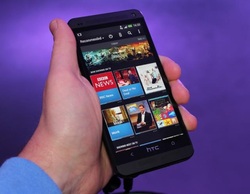 #1: HTC One HTC One would indeed be the first one on the list. This smartphone is the latest flagship of HTC as of this moment—or, can be this year. And it is indeed an accomplished flagship since it is not just attractive, but also highly enjoyable. It is so handy, and you’ll be mesmerized with the display with the highest pixel density yet on a mobile. Even with only 4-megapixel shooter at the back, the photo looks tremendously great with the sensor that is highly effective in low light. And it still works best even without flash to support. You’ll be hard-pressed to find a fault with this device, but it will be suggestive to have a more powerful battery or to have a replacement battery to support its neat features. Also, the aluminum casing can get too slippery. Nonetheless, it deserves the spot to be first on the list.
 #2: Samsung Galaxy S4
Although the plastic feel of the S4 is indeed something to complain about that started on the S3 version, it manages to pull it off as it is powered by a 1.6GHz 8-core Exynos processor—making it the first ‘octo-core’ smartphone. This flagship that is slimmer than its prequel, which is now 7.9mm, has a startling display with a Full HD 1080p Super AMOLED with a 441 pixels per inch count—leaving your eyes spoiled on the vivid display. Talk about features. You’ll be left flabbergasted with features like Smart Scroll and Smart Pause. With Smart Scroll, you can now move a text message simply by tracking where your eyes are looking—just do tilt movements. Smart Pause, on the other hand, makes a video freeze in action when it detects that you are looking away from the screen. You’ll enjoy much of its control features that this device can offer.
 #3: Sony Xperia Z
Are you a self-confessed hardcore adventurer even under water? Now, with Sony Xperia Z, you can capture your adventures underwater without having it waterlogged! Although it is not the most powerful handset, the quad-core processor powered device manages to pull it off as it has a 5-inch screen, bigger than that of HTC One and Samsung Galaxy S4. Sony even claims that it has the “highest levels of dust and water resistance on a smartphone.” With this phone, you need not worry about the impending splash incidents!
Aren’t they a few of the greatest phones invented yet? Don’t be the last to know!
So, you’ve made up your mind on buying a tablet, eh? Which one? You’d probably get stuck in a rut on finding which tablet PC works best for you… wait, what about the flagships of the big boys in the mobile industry? Sure! With their great performance and awesome displays, they are just beyond amazing! You’re really going to dig these tablets every feature—and they will also dig your pockets big time. Apparently, they are not our best friends—or, should we still consider them friends when talking about money matters? I could just say that they are real bank-breakers right off the bat. And how about tablet accessories? Sure you have splurged a real pretty penny with your tablet, and another one for tablet accessories? Oh! Tablet for headache, please! So, if you’re on the hunt for tablets that are wallet-friendly, then you are on the right page. Let’s cut to the chase and hit the list of awesome yet fitting for budget tablets below: 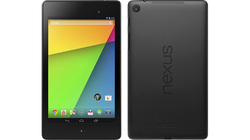 #1: Google Nexus 7
All thanks to the search giant, the Nexus 7 has now been revamped. It may be with the same size as the first version, which measures 114.3 x 200.6 x 7.6mm, but it is now powered by a 1.5GHz quad-core Qualcomm Snapdragon S4 Pro CPU. And I bet you’re going to love this second version more since now it includes an Adreno 320 graphics, 2GB of RAM, and a 1920 x 1200 resolution IPS display. You think that’s not much of a thrill? Well, how about the incorporation of a 5-megapixel shooter at the back? Now, you are not just limited with its front-facing 1.2-megapixel camera. It even runs on Android 4.3 Jelly Bean. So, what else can you ask for a tablet that only costs £199?
 #2: Amazon Kindle Fire HD What can you say about this good-looking 7-incher? Amazon Kindle Fi—steaming hot! Compared to other tablets, its frame is a tad bit wide so as to prevent accidental touches. Though we can leave the smudges on the LCD screen protector’s care, those random touches can get a real bummer. The only pitfall with this one is that it lacks a zoom-in feature. For £139, it works perfectly fine even if it lacks the beauty of iPad mini. And for a cheap price like that, it sure has something to offer on the table.
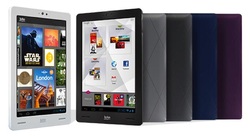 #3: Kobo Arc
Another 7-incher from the list: the Kobo Arc. It is known for its scrapbook-style interface. Sitting at the heart of this device is a 1.5GHz dual core processor that adds fluidity to an enjoyable experience. You can even play a lot of music file formats since Kobo Arc can support them! However, it owns its downsides: it lacks a rear-facing camera, a micro USB cable, Bluetooth, and a microSD card expansion slot. Disheartened by the drawbacks? Well, the Arc Tapestries and Discover features will be able to pull it off once more, so you won’t need to think twice on getting this tablet for only £159.99 (16GB), £189.99 (32GB), and £229.99 (64GB).
Won’t you still take a hold with one of these tablets? Get one now and make you and your wallet happy!
 The internet has provided us with a brand new promenade to contain an extension of ourselves. The digital life that we have enriched can be carried by us, whether it’s with the use of our PCs, tablets, or smartphones. However, some of us can’t seem to balance our actual and digital life. Instead of you being the master of technology, you were enslaved by its addicting effects, thus suffering from “Internet Addiction.” The term internet addiction was first coined by a psychologist back in 1995, when the web was still in its primal years. In fact, he only said that phrase to serve as a comical statement. But now, internet addiction has become a serious business. Because of its growing incidence, a hospital-based internet addiction treatment center is going to be opened at the Behavioral Health Services at Bradford Regional Medical Center in Pennsylvania. The program is purely voluntary, which lasts for 10 days. Presently, the facility can only accommodate up to four people who have been diagnosed with sever internet addiction. The patients will initially have to undergo an extensive evaluation process and a “digital detox” that disallows mobile phone, tablet, or internet usage lasting for at least 72 hours. After that, they’ll be asked to attend to therapy sessions and educational seminars to help control their compulsion. To be classified as an internet addict takes more than counting the number of hours one spends online. Instead, it qualifies patients under the condition if there were already consequences posed by their internet overuse, such as jeopardy on their careers and relationships or dishonesty about internet usage in itself. “There was a difference between people who depended on modern technology but could balance their online life with their offline life, and people whose obsession prevented them from functioning normally,” said Kimberly Young, a psychologist and founder of the new program. To be specific, being in front of the computer for hours to monitor your stocks or manage your online mobile store is not counted. The goal of the treatment is not for patients to completely distance their lives from technology; rather, it allows them to get back on the internet but in a healthy way. Young admits that computer use is vital to modern life, and it’s not practical for someone to stay completely offline. The program costs a staggering $14,000. It is not covered by insurance because up to this moment, internet addiction isn’t recognized as a mental health disorder by the psychiatric community. Though the price may be high, it may be the answer to eliminate a person’s counterproductive nature and realize his full potential. Just think of it as an investment that will provide you with ten-fold gains in the future. According to Dr. Charles O’Brien, a professor in the department of psychiatry at the University of Pennsylvania, “We are trying to come to grips with something that is very new, and we don’t want to define this as a disorder unless it is clinically important.” Anyway, with the rampant increase in the cases of internet addiction and the ongoing studies being conducted concerning it, it will just be a matter of time until the condition will be an accepted diagnosis that requires treatment.
One of the most successful manufacturers and innovators of the cell phone technology was Nokia. It is a Finnish multinational communications and information technology corporation that focused on mobile telephones and portable IT devices as its main products. Nokia is credited for being one of the key developers of Global System for Mobile Communications (GSM), the second generation mobile technology. From there, the progress never stopped, which led to the development of its successors, the 3G and 4G systems. And yet we arrive with this question, “How has Nokia achieved its fame?” Well, here’s the hardcore evidence. Take a look back at the best handheld devices that made Nokia a reputable brand name in the tech world.
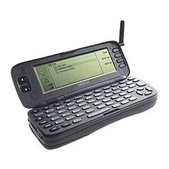 1. Nokia 9000 Communicator series. A mobile phone back in the days is considered a status symbol. People who carry a handheld device were regarded as a “somebody.” And in the business sphere, possessing a Nokia 9000 Communicator series makes one look more professional. It is a clamshell phone that opens to reveal a 640x200 monochrome screen and a QWERTY keyboard. With it at the palm of your hands, you feel like a big-shot.
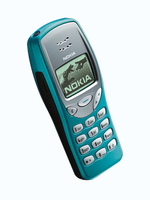 2. Nokia 3210. Nate Lanxon, editor of Wired, described this handset as “the greatest phone ever made.” Surely, he never had foreseen what’s more to come ahead in the cell phone industry, although his articulation was accurate. The classic Nokia 3210, which was released in 1999, sold more than 160 million units, making it one of the most successful phones ever.
 3. Nokia 8110. The renowned “banana phone,” which was also the phone featured in the sci-fi movie, The Matrix, starring Keanu Reeves, became an instant hit to mobile consumers all over the world. It features a slider form cover that protects the keypad when being carried inside one’s pocket. The design itself is also meant to bring the microphone closer to the mouth when talking to someone over the line.
 4. Nokia 1100. Simplicity is the name of the game for Nokia 1100. It is considered the world’s best selling phone handset and the best selling consumer electronics device in the world for selling 250 million units since its release in 2003. Notwithstanding the fact that there were already by far feature-loaded phones launched in the same year, it still has managed to assert its popularity.
 5. Nokia 7610. Although some would disagree, the Nokia 7610 placed as one of the handheld devices that made Nokia’s name. For starters, it is the first phone to feature a 1-megapixel camera with 4x digital zoom that lets you capture quality images of last decade’s standards. It is specifically made for “fashion conscious” individuals, hence its design. However, some were not thrilled with the keypad placement because it simply has an unconventional layout. You may find it difficult to key in using its alphanumeric keypad, especially if you’re left-handed.
Truly, everybody has a chance to be at the top of the game in history. And for Nokia, the journey has just ended. However, the legacy that it had worked hard for will never die in vain because without Nokia, smartphones of today might not have been as awesome as we know them to be.
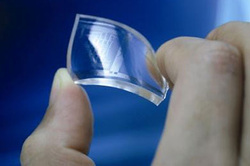 Perhaps the one thing that is considered the major drawback of mobile technologies is their battery life. You can have the most powerful device with sky-rocketing specs, but it won’t be any rewarding if you can only use it for only a few hours; then, you’re left staring at a useless blank screen at the end of the day. Although portable chargers serve as a temporary fix, still, the dream of having a long-lasting energy source is what consumers are clamouring to have in their handheld devices. The current technology of lithium-ion batteries can’t seem to keep up with the demands of more powerful and faster computers. You can see a lot of battery-saving tips online that can prolong the time your smartphone is kept on; however, that is just tantamount to limiting yourself to some of its great features and stripping yourself of the opportunity to utilize the full potential of your device. Though those tips can bring about minor improvements, they still can’t spell the fundamental difference that tech consumers really yearn for. Some experts are foreseeing the end of the lithium-ion technology. No matter how manufacturers have gone far in tweaking the said technology, improvements are still not enough to be able to match the innovations of handheld devices in general. So, some, who prefer taking the road less travelled, are working on a rather more revolutionary concept. And, one of the most promising areas in terms of battery research is based on the graphene technology. “It’s a new enabling technology. It’s not a progressive improvement over previous technologies; it breaks the normal paradigms of energy sources. It’s allowing us to do different, new things,” said James Pikul, first author of the concept. Graphene is a single layer of carbon, explains Dr. Richard Kaner, Professor of Chemistry and Biochemistry at UCLA. According to him, “It’s one of the strongest materials ever known, and it’s completely flexible.” It is found out that graphene has the ability to be a supercapacitior, enabling it to hold large amounts of charge that expends slowly. Furthermore, the potential of this variant was seen in charging it to its full capacity, which could only take less than a minute. Mind you, this is no science fiction at all. Because of the fact that graphene is a relatively thin material, it is the best energy source to be used on wearable gadgets, even so a gateway to paper-thin device prototypes. Another issue that graphene can address is the wear-and-tear phenomenon subjected to traditional rechargeable batteries. In the long run, batteries of today degrade and lose their ability to retain a charge. As of now, the British government has allocated £21.5 million to various UK universities involved in the research of graphene as a source of energy. It aims to develop the application for the material to be used for commercial purposes. It will just be a matter of time until smartphone manufacturers make the dream of an almost perpetual energy source that can be rapidly replenished come into fruition in every handheld device.
 The world today is in fact a dangerous place in which to live. Why? Well, it’s basically because of the people around us that have an intention to do us harm. Wherever we are, be it far away from our own homes or just around the corner, we always are vulnerable from attacks. And this is especially true when we travel to unfamiliar places. Damages aren’t only exclusive to physical attacks; they can also be in the form of digitally-motivated harassments. When we travel, we bring with us our smartphones, tablets, or laptops so that we can still preserve our connection to the world we left behind. Instead of taking a vacation from them, we take a vacation with them. However, logging onto foreign soil via a free Wi-Fi hotspot can be a journey to the unknown that can possibly be one full of insufferable surprises. So, before carelessly alluring the attention of digital attackers, better take heed of these travel tech safety tips. 1. Avoid public Wi-Fi as much as possible. The technology of wireless connectivity has become ubiquitous in most public places. Connecting on it isn’t really harmful per se; what can be potentially dangerous depends on how you utilize the share bandwidth. Experts advise you to limit your web activities with browsing when connected to a public Wi-Fi. 2. Take email precautions. If you’ll be travelling to an unfamiliar place, it’s better if you set up a different email account just for that occasion. It isn’t advisable to use your personal email account when travelling to avoid collateral damages if in any case the account gets hacked. 3. Limit usage of complementary computers. Some establishments offer free computer access to their clients. However, you are absolutely uncertain that those PCs are guaranteed safe. In worst cases, those units are brimming with malware or keystroke-registering viruses that can wreak havoc on your accounts if you’re not careful enough. But if you ever decided to use them, better limit it to checking the weather and reading news headlines. Additionally, never connect your handheld devices to those PCs via USB data cables to avoid any possible infiltration. 4. Let banking away from home be your last resort. It’s better to stick to physical banks as much as possible when you’re in a foreign country. You’ll never know if someone is already taking up measures to steal your riches, and the most vulnerable target would be your online banking account. 5. Protect your devices. Your gadgets may contain confidential information that must only be known by you. Losing your devices by carelessness or by theft can pose a security threat to you. Before going out on the road, set up your phone with an app that enables you to find it if misplaced or remotely delete any essential information from it for your own safety. Don’t dig your own grave by doing your online activities without extra precaution. Always take heed of the abovementioned tips to make sure you have that peace of mind as you travel. You might just indulge yourself in frustration instead of relaxation on your vacation, so be careful.
|














 RSS Feed
RSS Feed